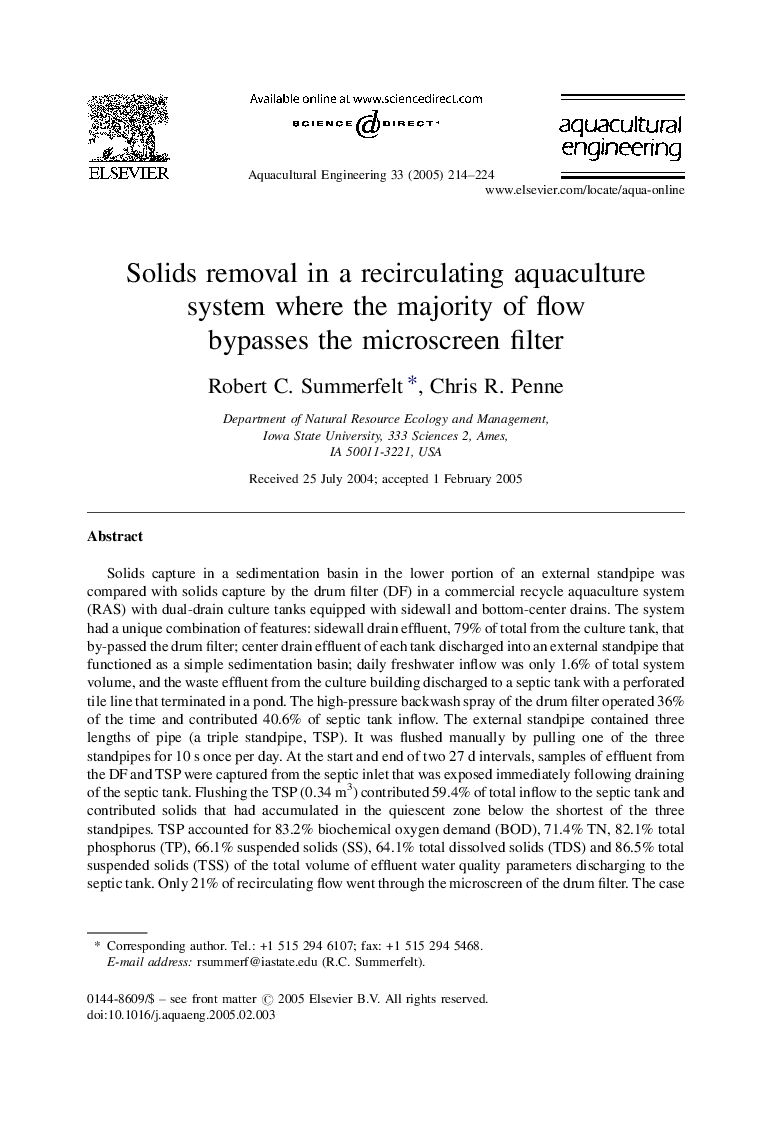| Article ID | Journal | Published Year | Pages | File Type |
|---|---|---|---|---|
| 9477375 | Aquacultural Engineering | 2005 | 11 Pages |
Abstract
Solids capture in a sedimentation basin in the lower portion of an external standpipe was compared with solids capture by the drum filter (DF) in a commercial recycle aquaculture system (RAS) with dual-drain culture tanks equipped with sidewall and bottom-center drains. The system had a unique combination of features: sidewall drain effluent, 79% of total from the culture tank, that by-passed the drum filter; center drain effluent of each tank discharged into an external standpipe that functioned as a simple sedimentation basin; daily freshwater inflow was only 1.6% of total system volume, and the waste effluent from the culture building discharged to a septic tank with a perforated tile line that terminated in a pond. The high-pressure backwash spray of the drum filter operated 36% of the time and contributed 40.6% of septic tank inflow. The external standpipe contained three lengths of pipe (a triple standpipe, TSP). It was flushed manually by pulling one of the three standpipes for 10Â s once per day. At the start and end of two 27 d intervals, samples of effluent from the DF and TSP were captured from the septic inlet that was exposed immediately following draining of the septic tank. Flushing the TSP (0.34Â m3) contributed 59.4% of total inflow to the septic tank and contributed solids that had accumulated in the quiescent zone below the shortest of the three standpipes. TSP accounted for 83.2% biochemical oxygen demand (BOD), 71.4% TN, 82.1% total phosphorus (TP), 66.1% suspended solids (SS), 64.1% total dissolved solids (TDS) and 86.5% total suspended solids (TSS) of the total volume of effluent water quality parameters discharging to the septic tank. Only 21% of recirculating flow went through the microscreen of the drum filter. The case study demonstrated the value of an inline sedimentation basin to remove heavy solids and reduce loading of the drum filter.
Related Topics
Life Sciences
Agricultural and Biological Sciences
Aquatic Science
Authors
Robert C. Summerfelt, Chris R. Penne,
